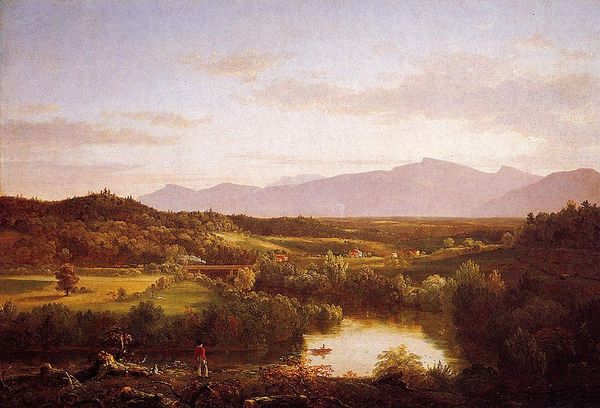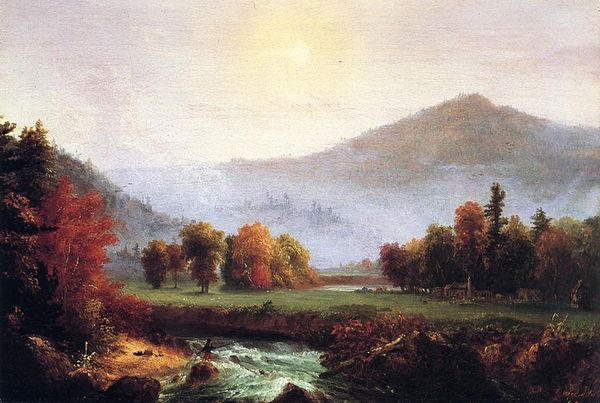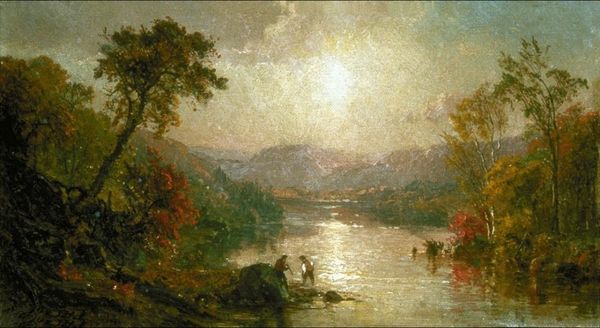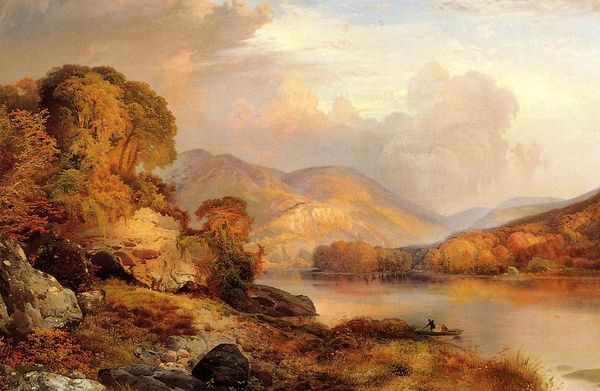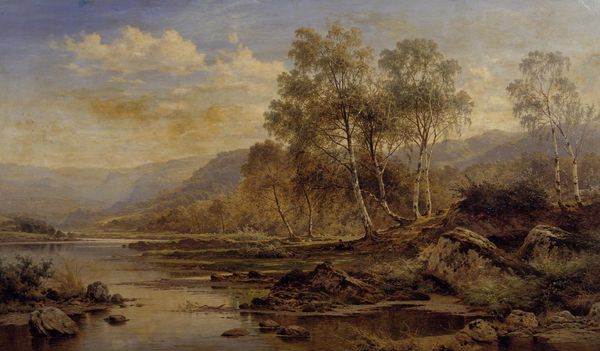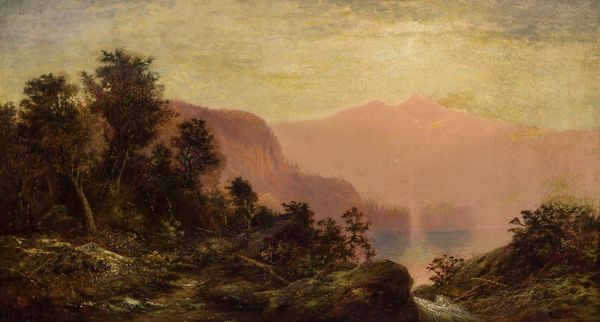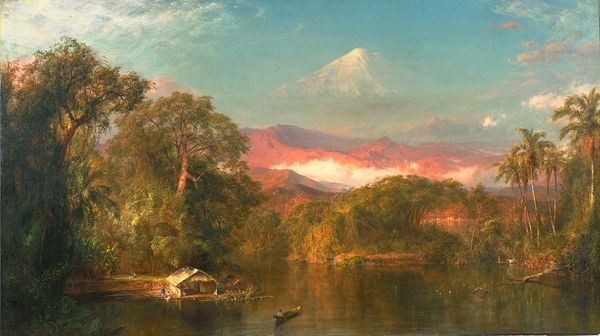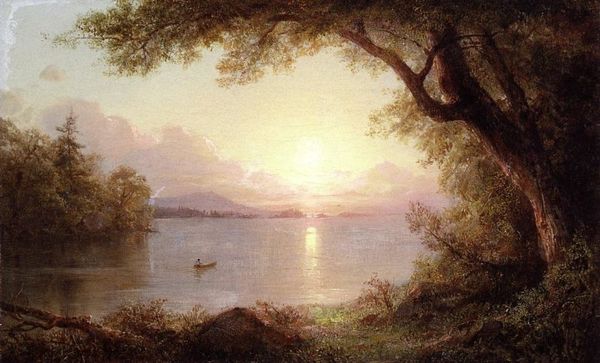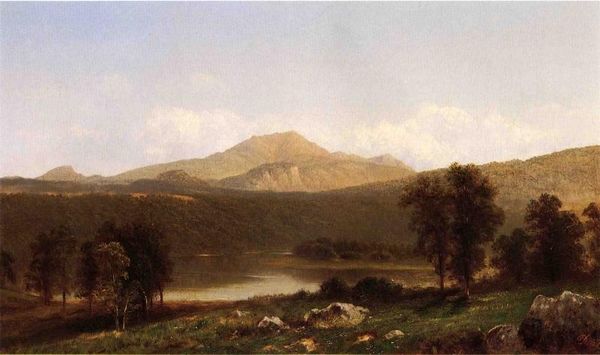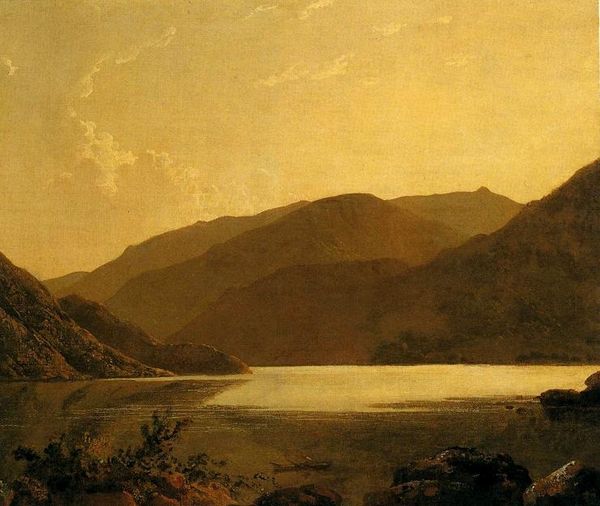
Copyright: Public domain
Frederic Edwin Church made this landscape, titled "Mount Chimborazo," using oil on canvas. The materials themselves are traditional enough, but it’s the way that Church deploys them that is so fascinating. Consider the amount of labor implied in this image. Though it appears effortless, even sublime, Church would have spent hours layering and blending the paint, in the service of rendering the scene before him, and in this way, he mirrors the laboriousness of landscape itself, its slow unfurling over millennia. And what landscape it is: the South American vista, made accessible to an American audience, eager for imagery that would match their expansionist ambitions. The very act of observing and then representing this foreign land suggests an act of appropriation, a cultural consumption that mirrors the extraction of material resources. Church’s technique, therefore, belies the complex relationship between art, labor, and the natural world. Ultimately, this work reminds us that even the most seemingly straightforward landscape painting is in fact a highly constructed object, born of both artistic skill and the social and political context in which it was made.
Comments
No comments
Be the first to comment and join the conversation on the ultimate creative platform.

